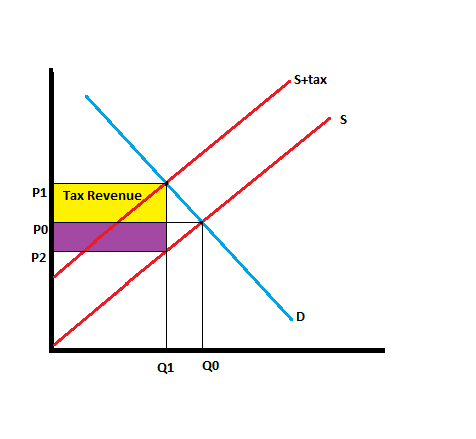I'm doing a paper on the 'coca-cola tax' the tax on all sugary drinks. The premise is that it is an excise tax, which will then be passed 100% on to consumers. What I'm struggling with is how the supply demand curve appears.
In a normal excise tax, you would have something like the attached image, withe the area of Yellow AND Purple representing the tax (albeit more proportional), as both consumer and producer have their share of the tax burden. However if the producer passes the tax burden on to consumers, then the only the area in yellow would exist? Assuming the P1-P0 represents the amount of the tax. So if i drew the same graph as below, but without the purple area, it makes sense to me, but it contrdicts all the models. UNLESS the supply is nearly perfectly elastic. Which you could argue it would be for the beverage industry? I'm confused, help me out please
[ ][1
][1